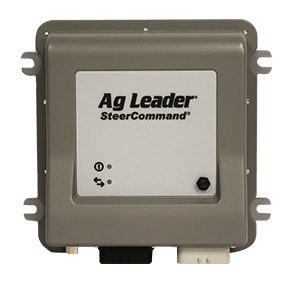Features of Crop Scouting with SMS™ Mobile
In one of Aaron’s more recent posts, he talked about the value of crop scouting. Scouting your crop will help you identity problem spots in your fields and help you decide if any action should or can be taken to address those areas. Documenting information collected during scouting will help you after harvest to evaluate why areas performed the way they did and help you decide a course of action for next year. A few items that could be documented include: rows that didn’t get planted, planting depth, seed spacing, nutrient needs, pest pressure, or whatever mother nature throws your direction. We added a Crop Scouting operation to SMS Mobile several versions back to help you with this documentation. This spring we released SMS Mobile Version 5.0 with two new features to help you gather additional information when scouting your fields.
Feature #1 – Ag Leader OptRx crop sensor added as a supported sensor. With the release of Version 1.1 of the OptRx crop sensor, we are now able to connect an OptRx crop sensor to a PDA, such as the MESA, or to a PC. SMS Mobile can use a sensor with any operation, but the two most common for OptRx will be Crop Scouting and Coverage Logging. For those that want to drive through the field with a single sensor, you can use Coverage Logging and SMS Mobile will record the reading automatically as you drive. Those that want to walk through the field and make notes for specific locations can use the OptRx sensor to look at crop health while checking stand counts and looking for pests.
Feature #2 – Picture Notes
We also added the Layer Notes tool in version 5.0. You can now make a note with a GPS location and take a picture if your device has a built-in camera, or you can manually add a picture stored on your device. If you think about the saying “A picture is worth a thousand words,” it doesn’t take long to realize how much easier it is to look at a picture when trying to describe how severe crop damage or insect pressure might be in an area. This information can then be synced to SMS Basic or SMS Advanced and can be viewed when you create a map or when you create crop scouting reports.
If you’ve been watching or reading the news from eastern Iowa lately, you may have heard about the strong winds that went through the area and caused damage to trees, buildings and crops. My parents have already taken pictures of the damage in the field, so we will be linking those into SMS Advanced the next time I’m home and then using that layer as a way to evaluate the yield loss compared to areas that were not damaged as badly.

















